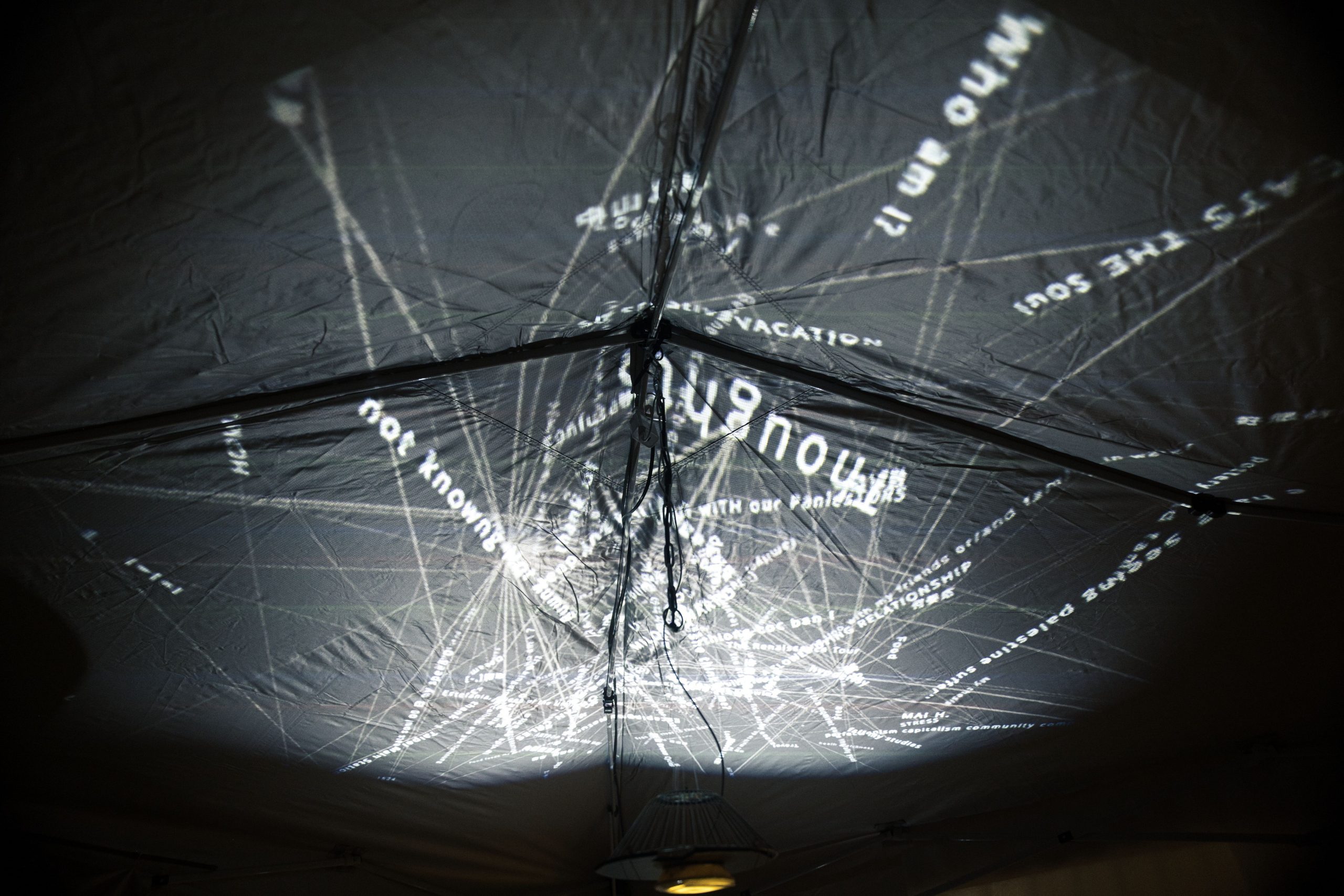Which traces are yours? Which are mine? Where do they connect? Whether their origins are internal or external, all traces are deeply tied to the traces of others, forming a collective system of memory, which exerts influence on groups and individuals, often in unforeseen ways. The installation “living traces” invited visitors to introspect, connect and leave traces, to engage as much as they would like and explore the interconnectedness of remembering bodies.
Installation, 2023
Leo Barton, Matthias Naegeli, Martha Oelschläger, Esme Chuyi Wang
Taking the form of an iconic Taiwanese night-market stall, the audience slowly discovers the various media and experiences to be had within “living traces”. First, the visitor encounters a curtained beige pavilion. Stepping in, the circular aluminum table and lazy Susan surrounded by red plastic stools invite the public to sit. The table is set. However, there is no cutlery or food here. Sticky notes and pens adorn each place alongside a laminated menu, featuring questions instead of foods. Written notes cover the turntable in the center. Visitors are invited to add their traces/sticky notes to those collected on the turntable. As the curious gaze detaches from the table, one can spot projections illuminating the ceiling of the pavilion. Words and symbols from the turntable become a cloud of interconnected points that move in slow choreography. When time comes to leave, the audience passes a small counter, where a receipt machine invites them to “check out“. At the push of a button, a receipt is printed. Offering the audience to take the collated traces of the table with them.






Process
Through field trips, internal workshops and discussions the group got a deeper understanding for the practice of each other and was able to condense a common interest. Through this project the group wanted to form shared memories, deal with the concept of collective memory and research on embodied knowledge. Ultimately the artists wanted to explore how (collective) memories [the traces from our past] form, morph and die when our bodies and minds (fail to) access them. They wanted to work with an interactive installation, and play with the associations of clouds, mist, data and bodies as containers for individual or collective memories, as well as highly specialized or intuitive media.

